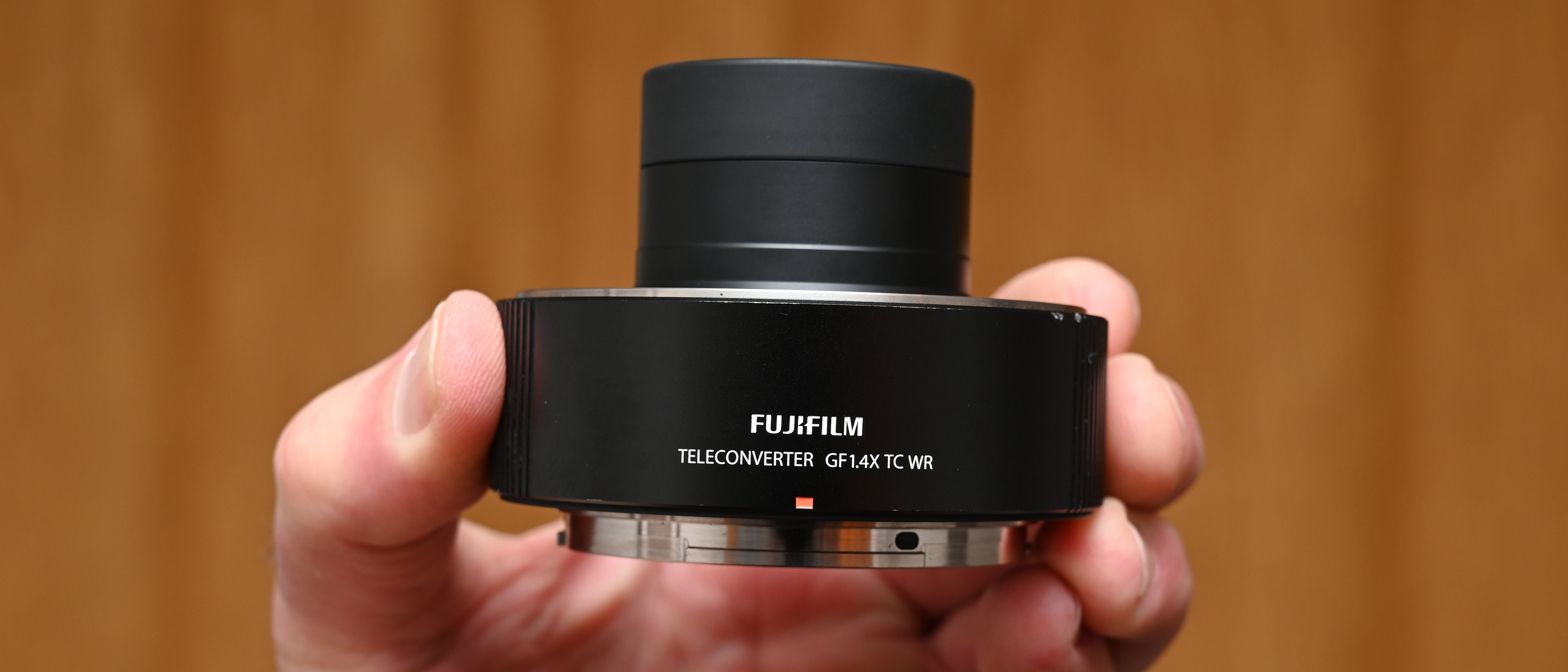Digital Camera World Verdict
There are currently no super-telephoto lenses for the Fujifilm GFX medium format system so I like that the Fujinon GF 1.4X TC WR teleconverter boosts the reach of the pair of prime and zoom telephoto lenses in the current catalog, and with very little impact on image quality or overall performance.
Pros
- +
1.4x boost in reach and magnification
- +
Excellent performance/image quality
- +
Tough weather-sealed build quality
Cons
- -
Only compatible with 2 lenses so far
- -
Expensive for a teleconverter
- -
Relatively weighty
Why you can trust Digital Camera World
Fujifilm is a world-renowned photographic company that needs no introduction. It’s been going about its business since 1934, but the medium-format GFX system is comparatively in its infancy, having been launched in 2017. It certainly hit the ground running though, and I’m a big fan of the growing range of excellent Fujinon GF lenses for its medium format cameras.
Although the range is continually expanding, there are currently no GF-mount super-telephoto lenses. At the time of writing this review, the longest telephoto offerings are the Fujinon GF 250mm F4 R LM OIS WR prime and the Fujinon GF 100-200mm F5.6 R LM OIS WR zoom. Factor in the large medium format image sensor of GFX cameras and these lenses give a maximum reach equivalent to using roughly a 200mm or 160mm lens on full-frame cameras, respectively. With high hopes to be one of the all-time best teleconverters, the Fujinon GF 1.4X TC WR aims to add extra reach and versatility to the GFX system.
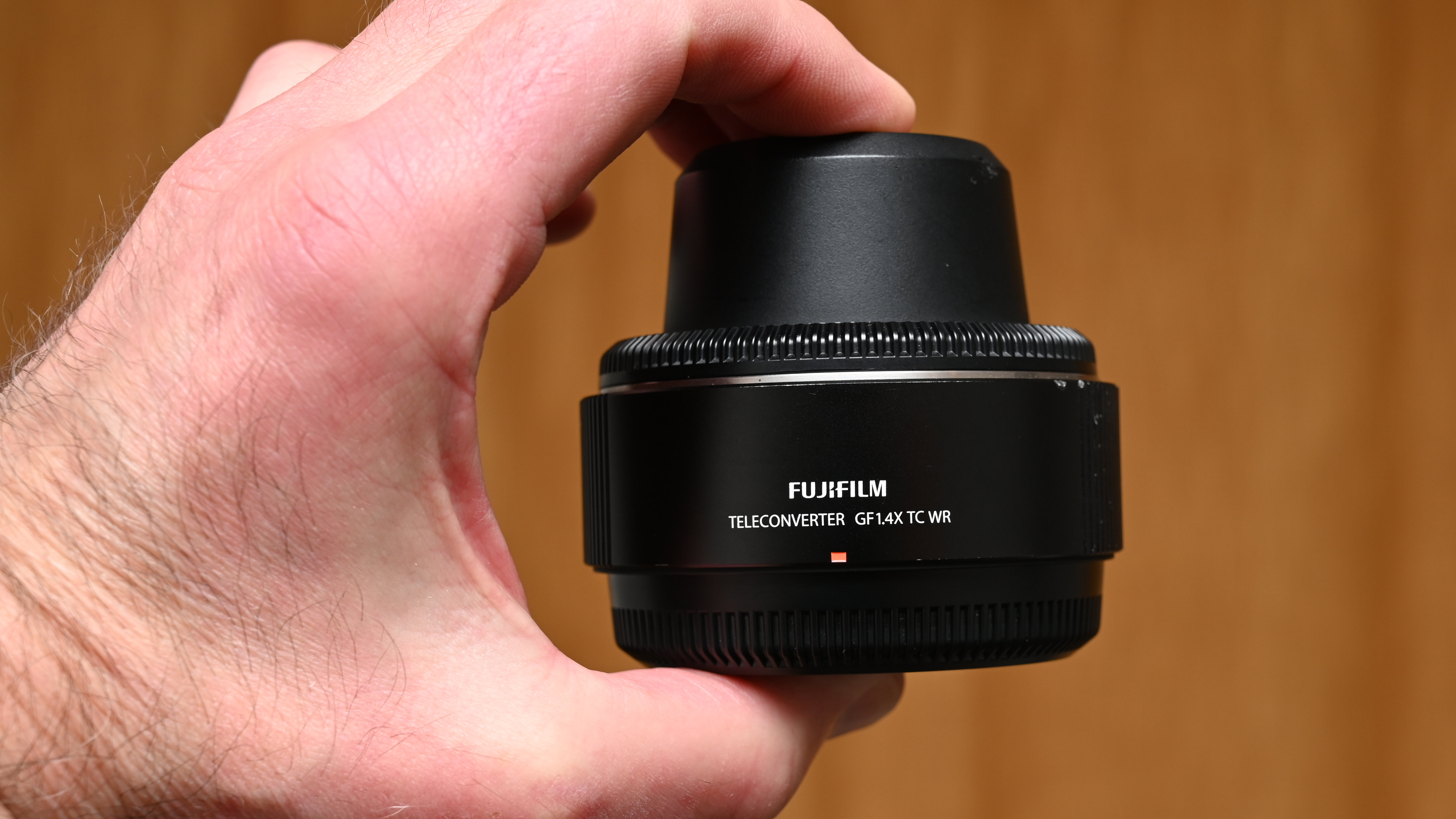
Fujinon GF 1.4X TC WR: Specifications
| Mount | Fujifilm GF |
| Lens construction | 7 elements in 3 groups |
| Focal length multiplier | 1.4x that of main lens |
| Aperture reduction | 1 f/stop |
| Minimum focus distance | Same as main lens |
| Maximum magnification | 1.4x that of main lens |
| Filter size | N/A |
| Dimensions | 82 x 27mm |
| Weight | 400g |
Fujinon GF 1.4X TC WR: Price & Availability
As yet, there’s no 2x teleconverter for the GFX system so the Fujinon GF 1.4X TC WR is your only choice for extending the reach of telephoto lenses. There’s also currently little choice when it comes to what lenses you can actually use the teleconverter with. The only options so far are the Fujinon GF 250mm F4 R LM OIS WR prime and the Fujinon GF 100-200mm F5.6 R LM OIS WR zoom, as mentioned above. Typical of GF-mount medium format glass that needs to produce a larger image circle than for full-frame and especially crop-sensor cameras, the Fujinon GF 1.4X TC WR is comparatively pricey for a 1.4x teleconverter, at around £749/$849. That’s around twice the price of the Fujinon XF1.4X TC WR for Fujifilm’s APS-C format X system.
Fujinon GF 1.4X TC WR: Design & Handling
The optical design is based on 7 elements arranged in 3 groups, which is an identical arrangement to that of the smaller Fujinon XF1.4X TC WR teleconverter for APS-C format Fujifilm X-mount cameras and lenses. As I’d expect from a medium format teleconverter, the Fujinon GF 1.4X TC WR is much larger and heavier than Fujifilm’s crop-sensor equivalent, measuring 82x27mm and 400g compared with just 58x15mm and 130g.
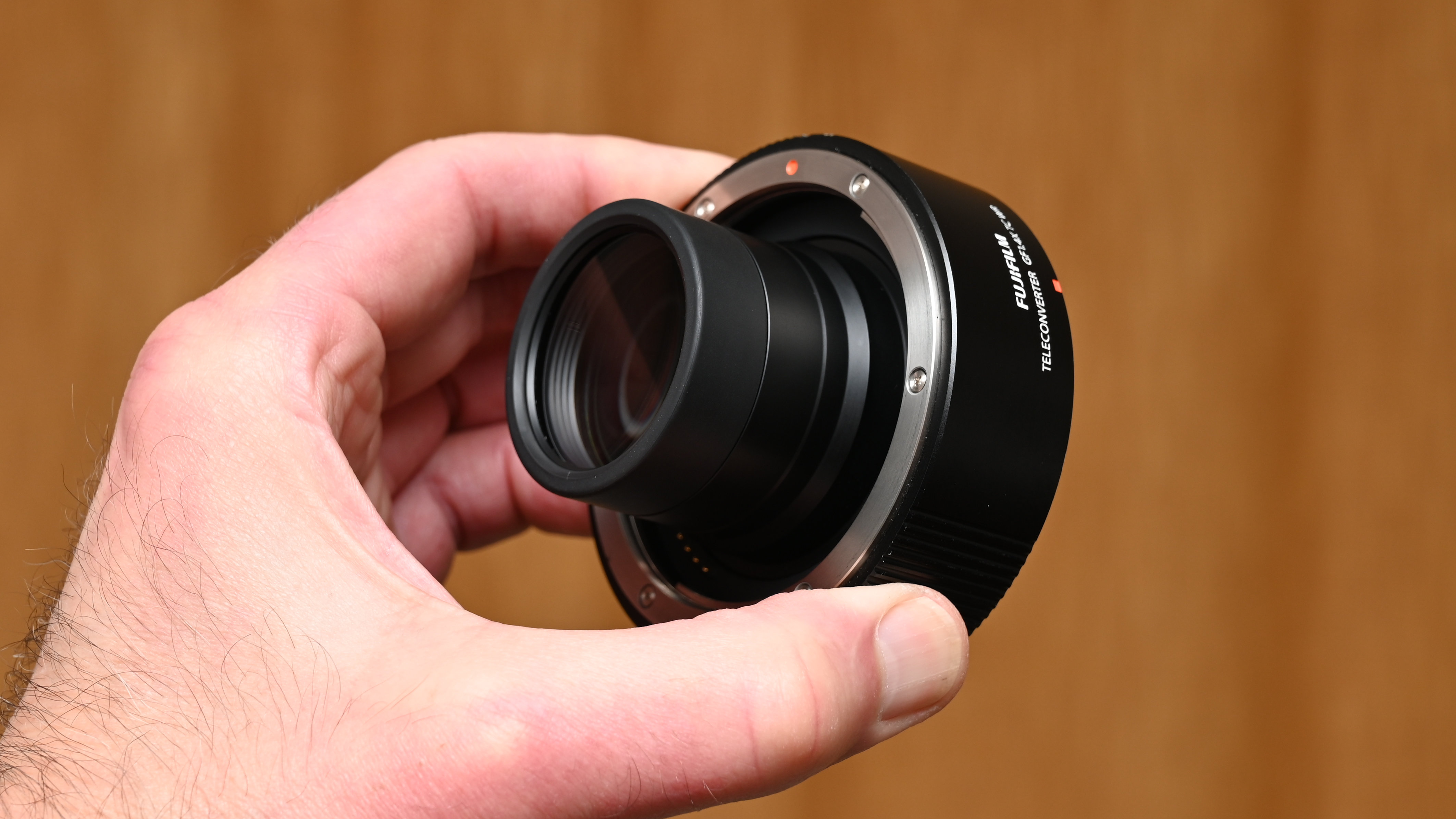
Considering the girth and weight of Fujifilm’s medium format telephoto prime and zoom lenses, the additional size and weight of using the teleconverter doesn’t make a massive difference. For example, the Fujinon GF 250mm F4 R LM OIS WR prime weighs in at 1,425g and the Fujinon GF 100-200mm F5.6 R LM OIS WR zoom tips the scales at 1,050g. Naturally, you get the usual 1 f/stop reduction when using the teleconverter, narrowing the aperture rating of these two lenses to f/5.6 and f/8 respectively.
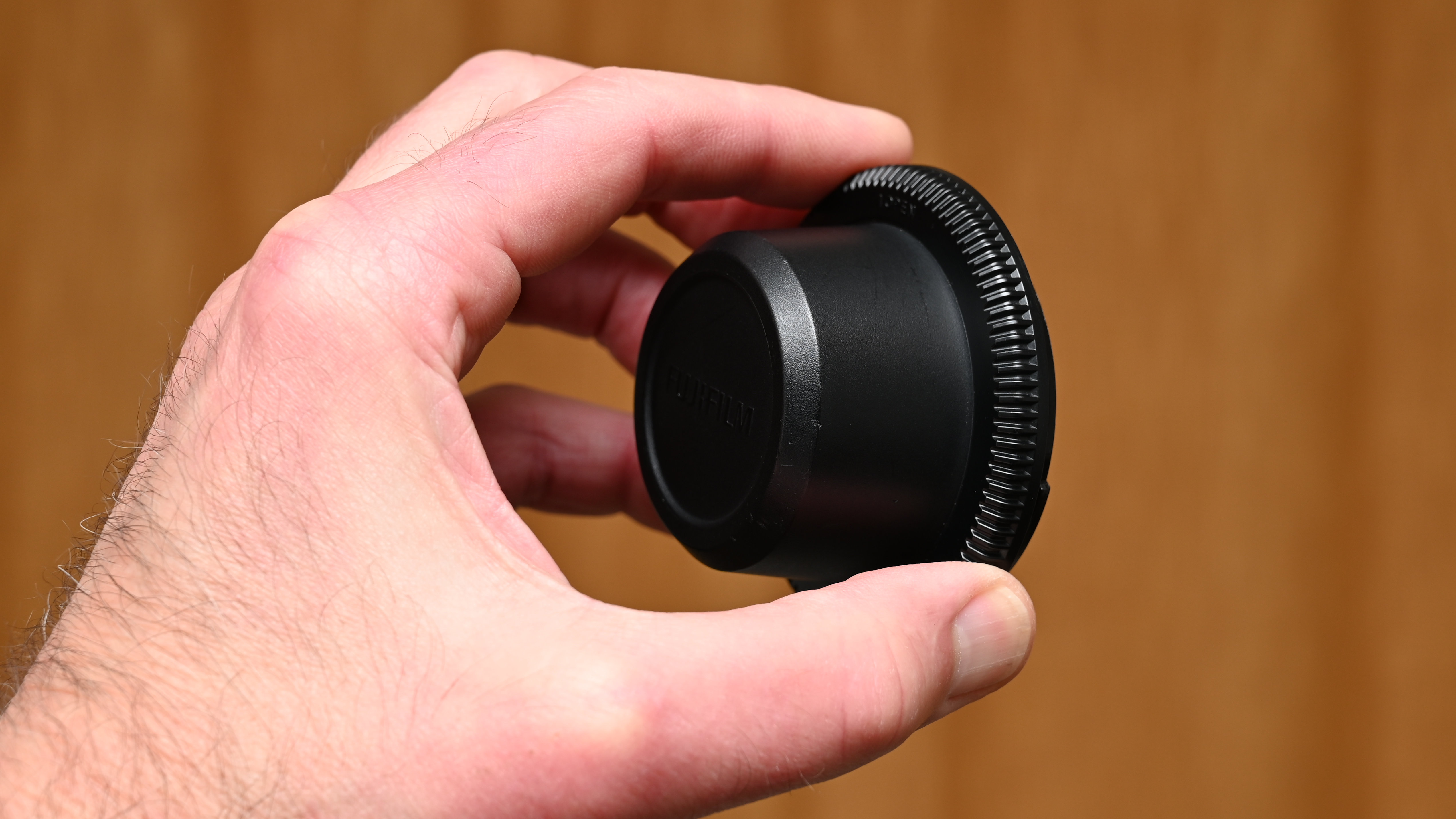
Let’s do the math. The maximum focal length when using this 1.4x teleconverter becomes 350mm for the prime lens and 280mm for the zoom. In full-frame terms, it’s similar to using a 280mm or 220mm focal length respectively. Typically for a teleconverter, the minimum focus distance for the main lens remains unaltered, so as well as getting a boost in focal length, you also get 1.4x the maximum magnification ratio. That’s handy for extreme close-ups, working out to magnification ratios of 0.31x for the prime and 0.28x for the zoom, the latter at its shortest zoom setting.
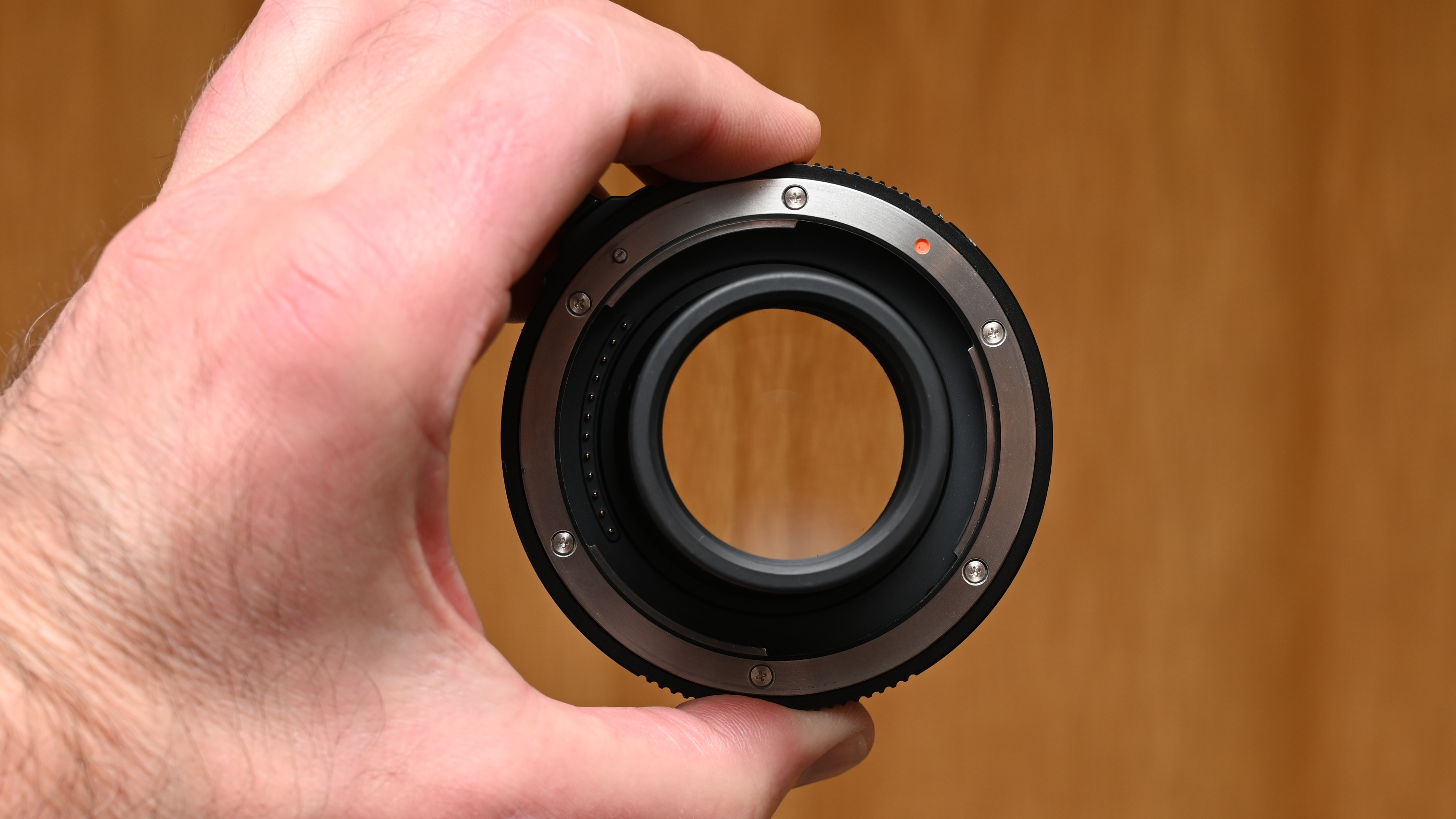
As I’d expect from a modern teleconverter, especially at this price, the GF 1.4x enables full electronic communication between the main lens and the camera body. As such, autofocus, metering and image stabilization remain available, and full EXIF data is embedded in images. When it comes to build quality, the teleconverter is extensively weather-sealed and feels particularly solid and well-built.
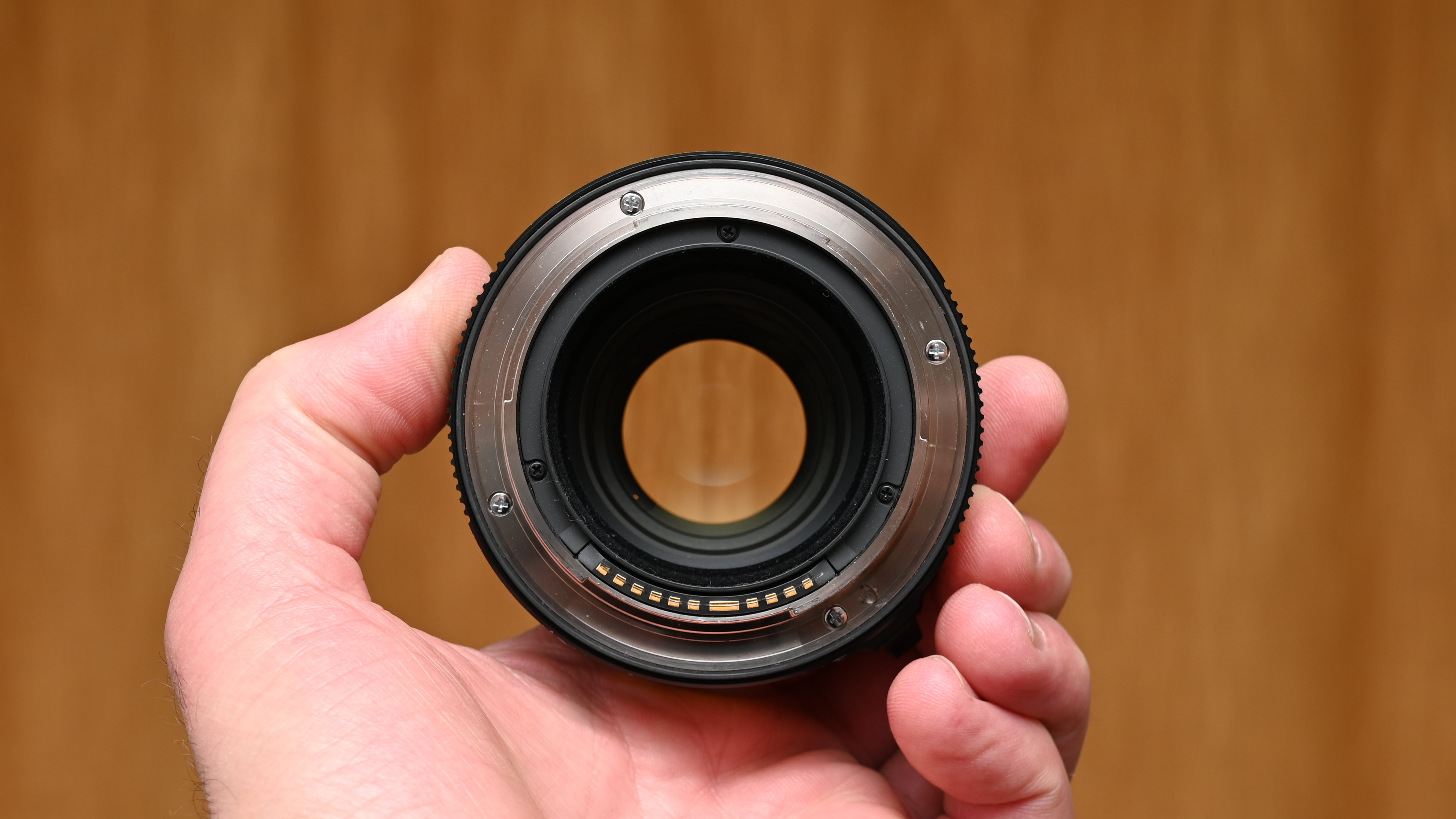
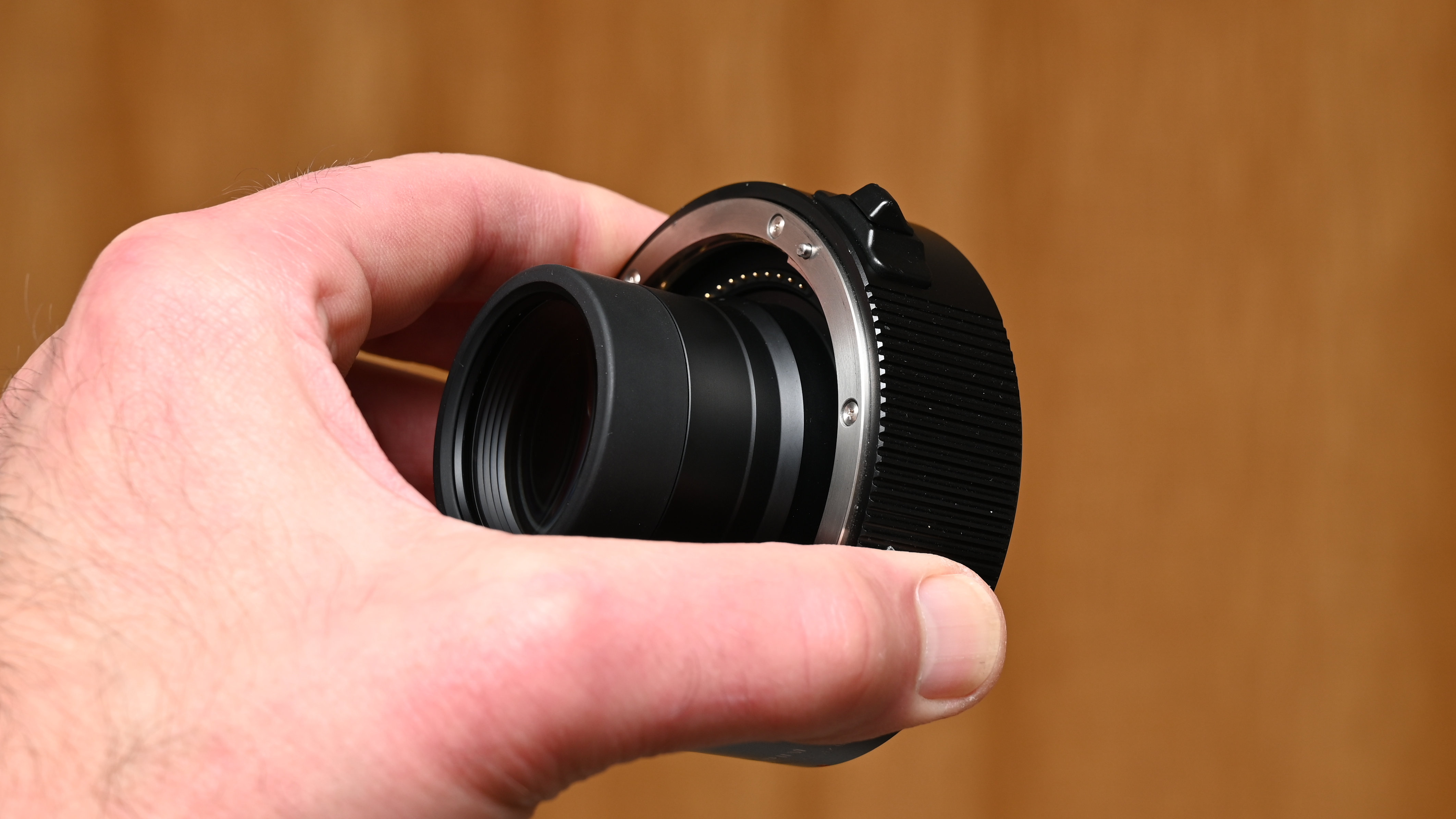
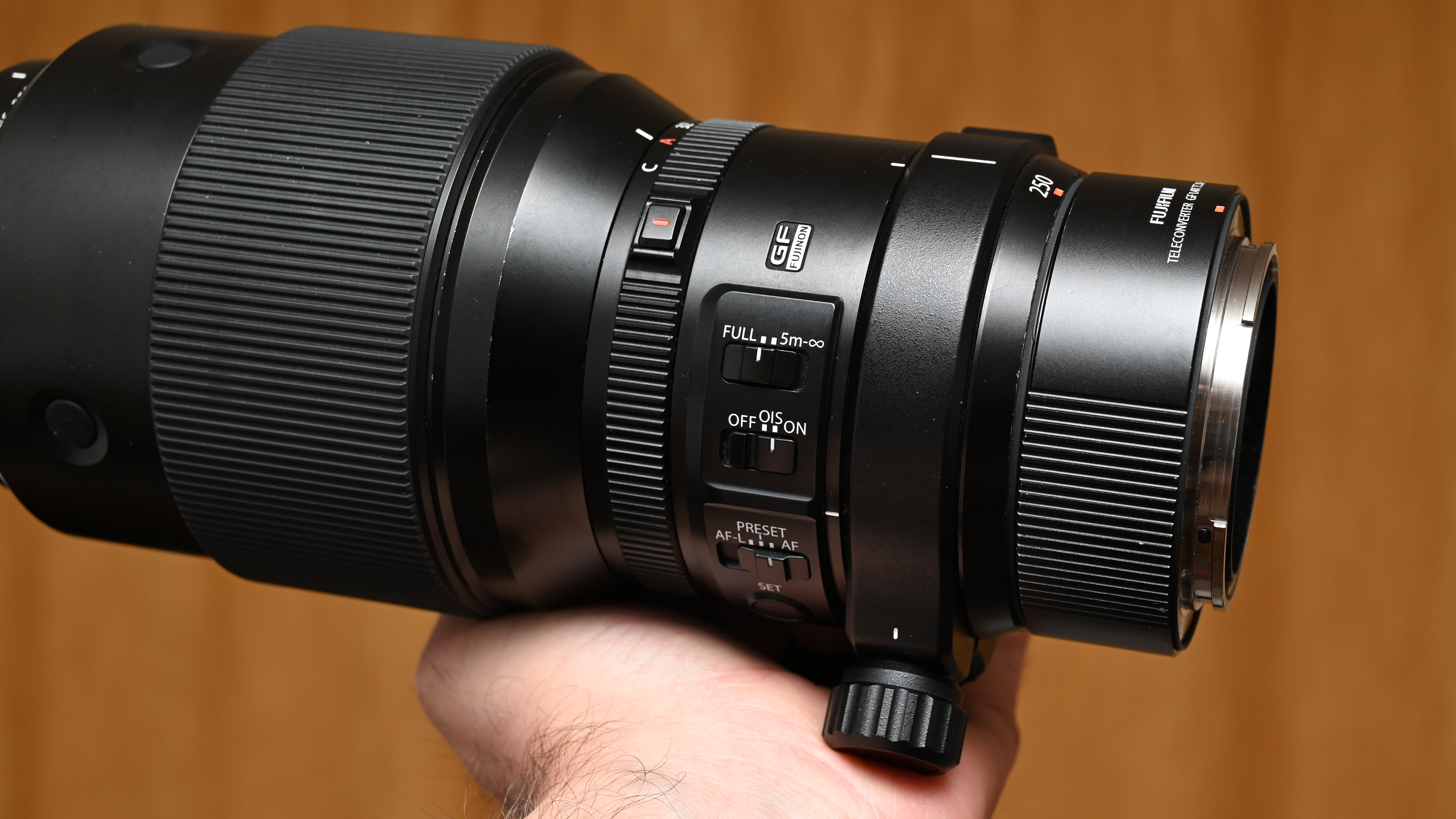
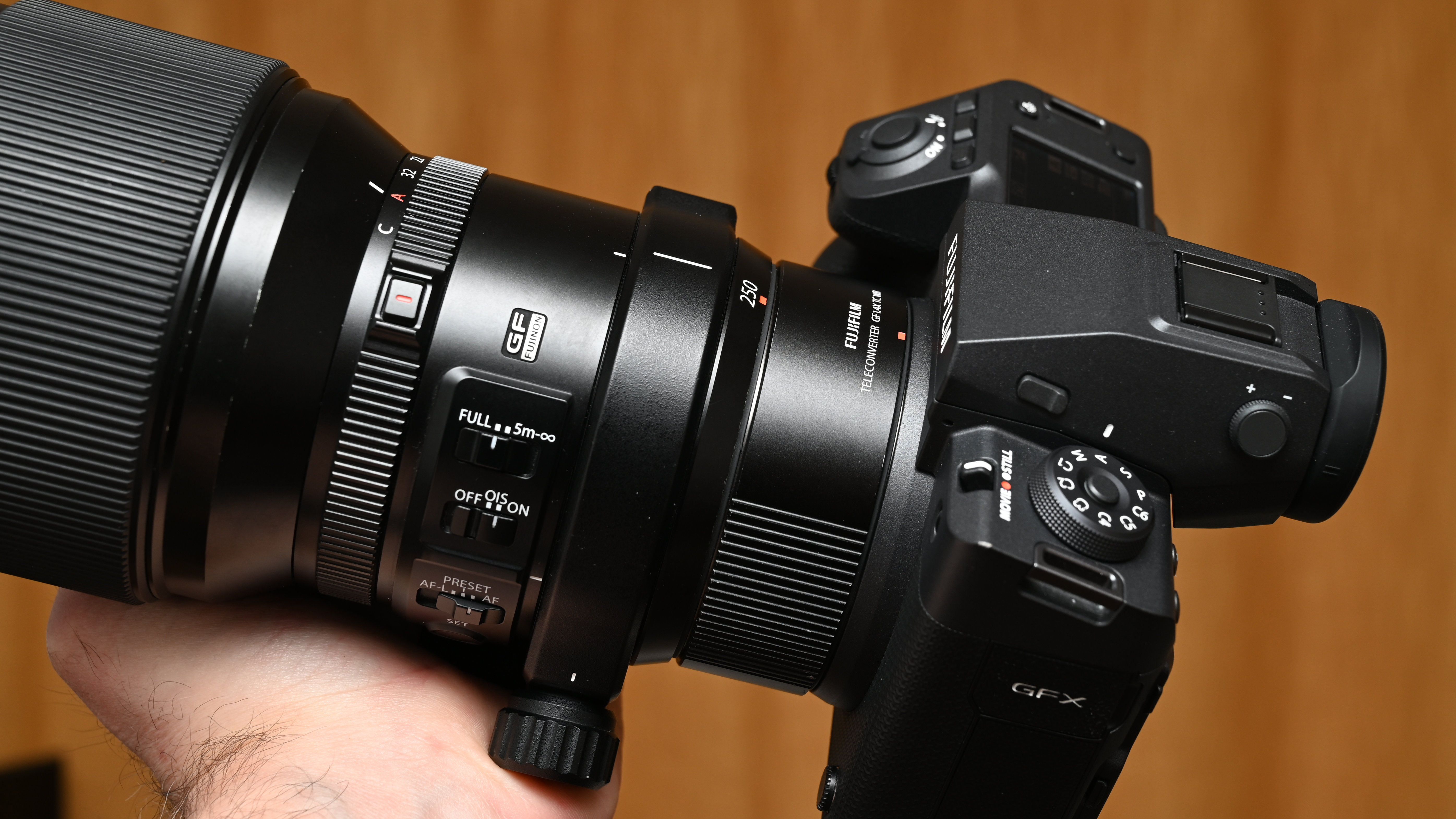
Fujinon GF 1.4X TC WR: Photo Performance
Fujifilm claims that there’s ‘hardly any deterioration’ in performance when adding the teleconverter to one of its GF medium format telephoto lenses. That’s an increasingly common claim among camera and lens manufacturers these days. We’ll see about that but, on a practical note, Fujifilm recommends setting the host camera’s ‘AF Boost’ function to the Normal setting, to maintain autofocus performance when using the teleconverter. That’s due to the 1 f/stop reduction in light transmission when adding the teleconverter to the main lens.
I tested the teleconverter with the Fujifilm GFX 100 II and Fujinon GF 250mm F4 R LM OIS WR prime lens. They’re both phenomenal bits of kit. The medium format camera body has a 102 megapixel image sensor and the lens is sharp enough to take full advantage. It’s therefore a tall order for a teleconverter to maintain such high levels of optical performance.
In wide-ranging lighting conditions, I found that autofocus remained fast and consistently accurate when using the teleconverter. Image stabilization also remained equally effective, taking the longer focal length into account, which requires a faster shutter speed for handheld shooting.
For outright image quality, the teleconverter maintains superb levels of sharpness along with excellent control over color fringing, distortion, ghosting and flare. It’s simply a great performer - enough said.
Fujinon GF 1.4X TC WR: Sample Images
To demonstrate the image quality of the Fujifilm GFX 100 II, Fujinon GF 250mm F4 R LM OIS WR prime lens and Fujinon GF 1.4X TC WR teleconverter, this gallery includes a series of shots taken with just the camera and main lens on their own, plus comparison shots with the teleconverter added into the equation. As you might notice, for any given focus distance and aperture setting, the depth of field is also reduced by a factor of 1/1.4x when adding the teleconverter. All of the images were captured in controlled conditions under photographic LED lighting arrays. I used a sturdy tripod and set an exposure self-timer delay in the camera, and took each shot several times to judge the consistency of results, which turned out to be highly impressive. In keeping with our testing regime, all of these images were taken in addition to our lab-test shots, which are based on the use of official test charts.
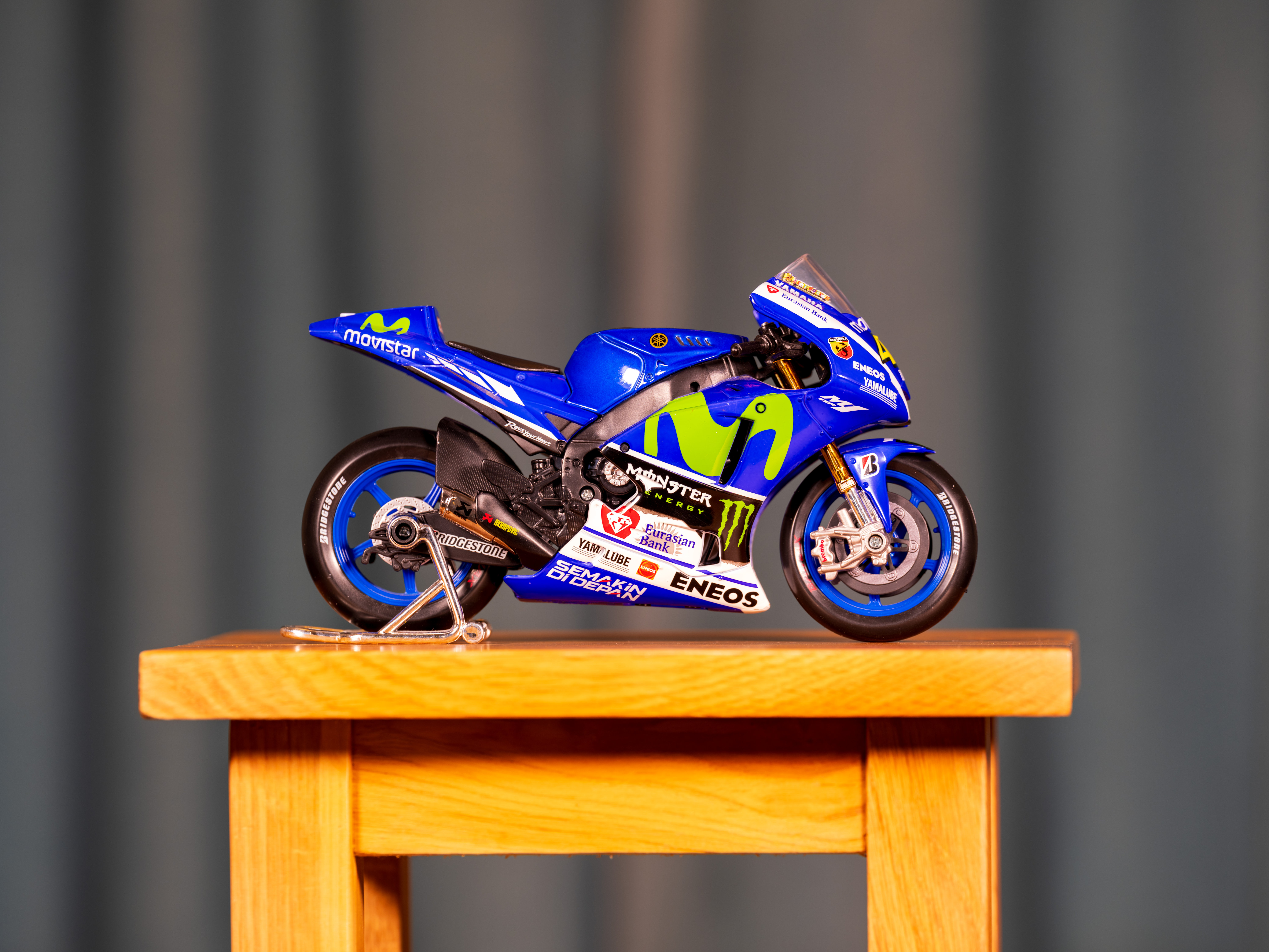
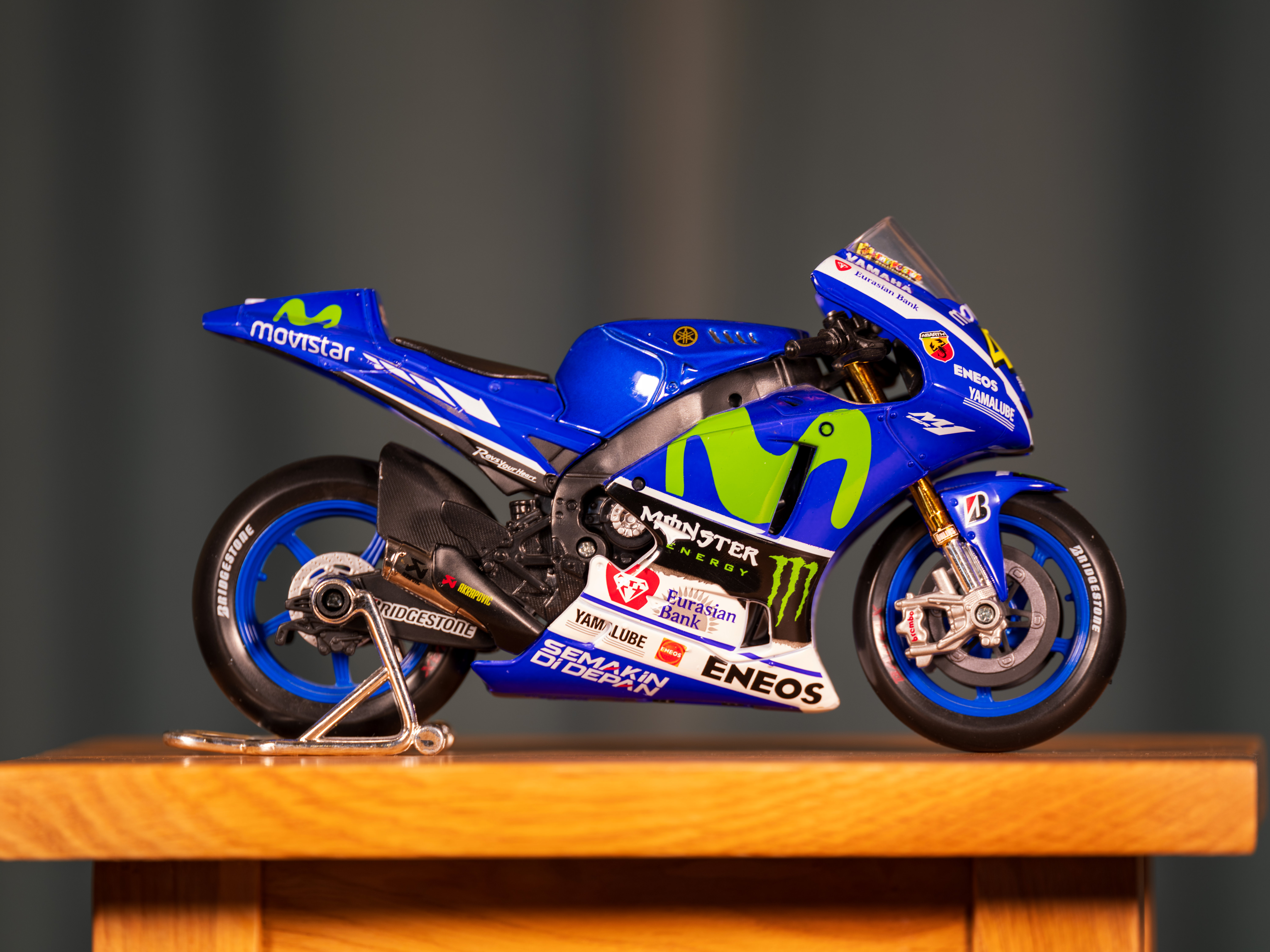
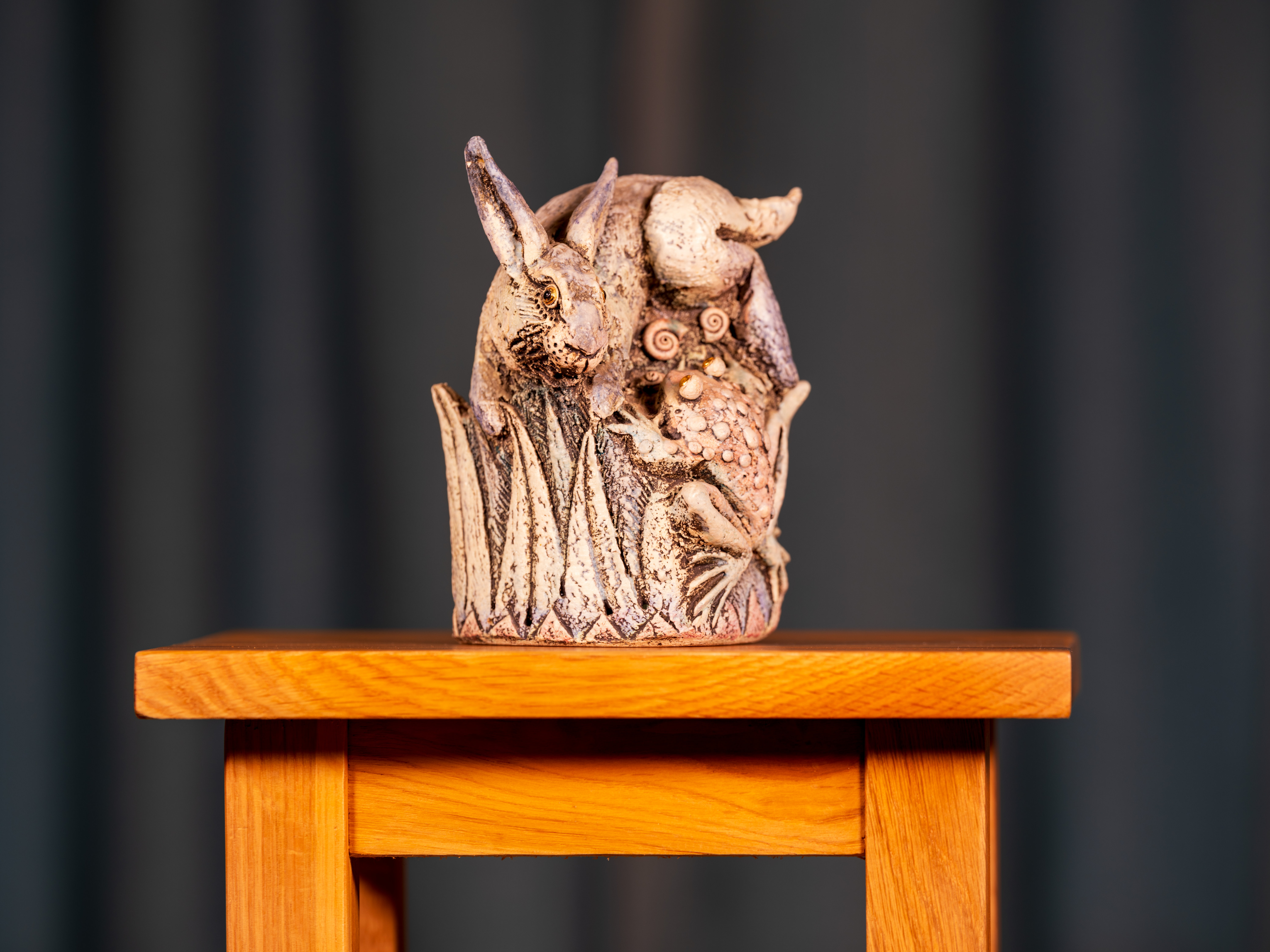
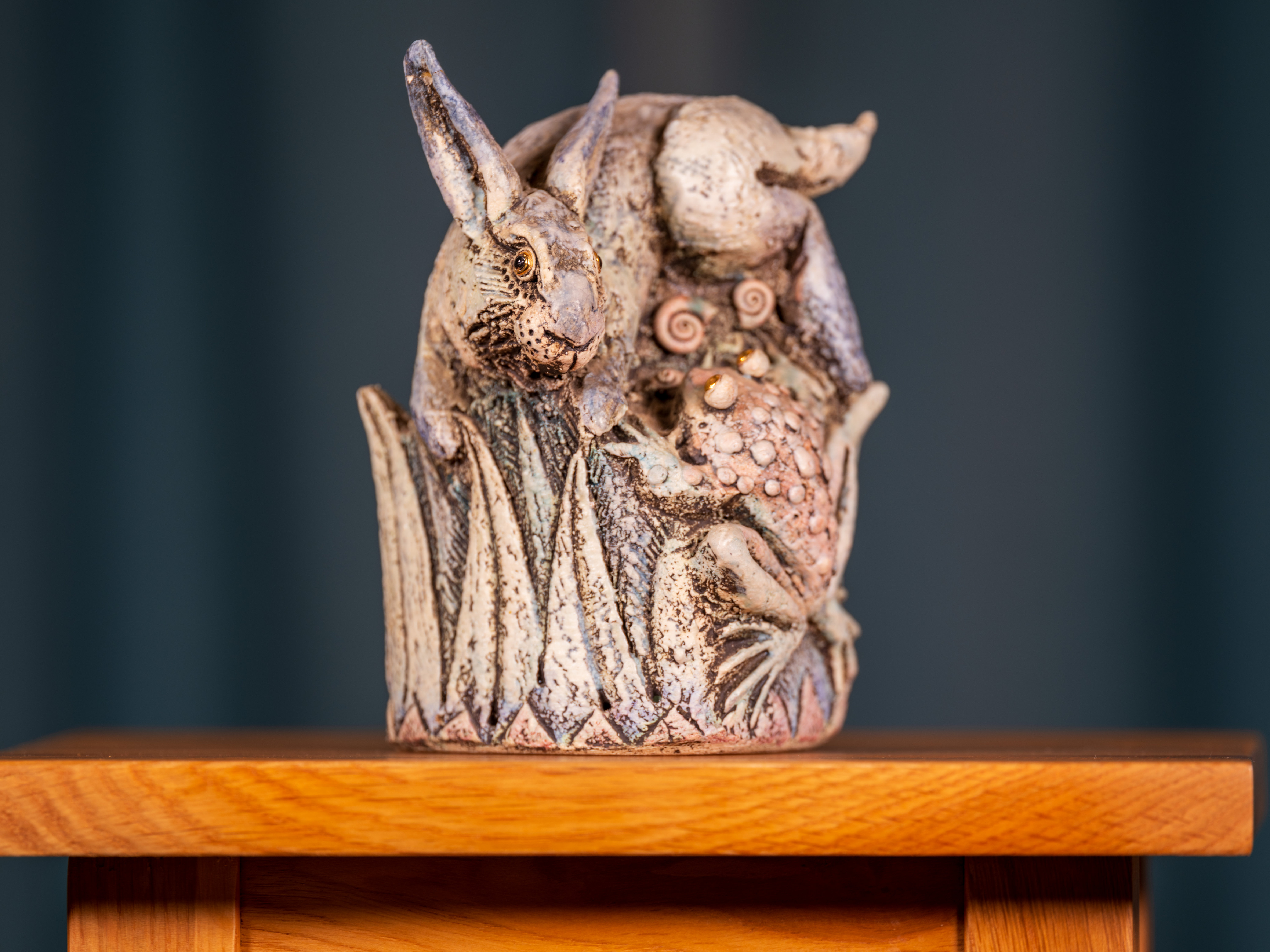
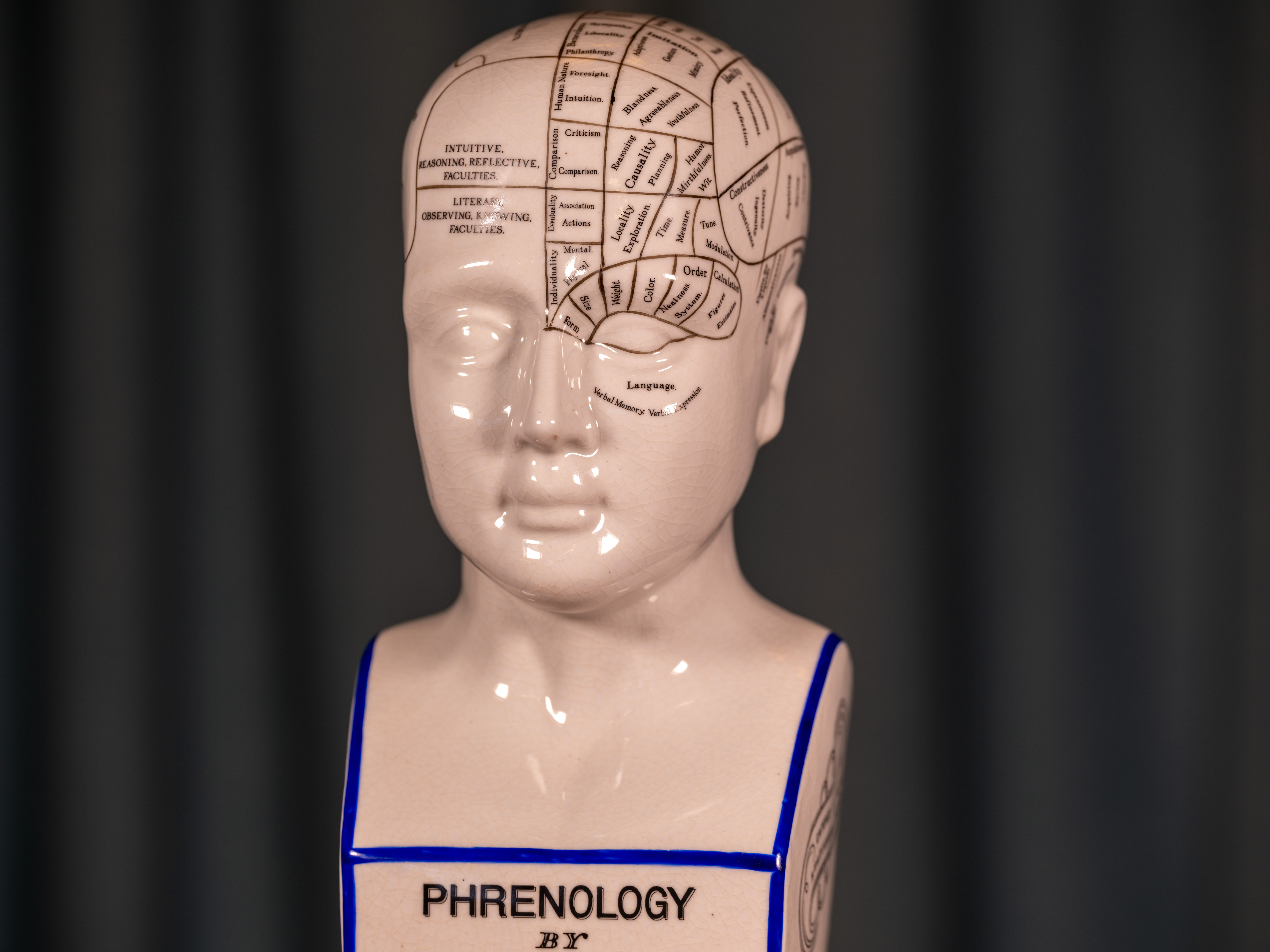
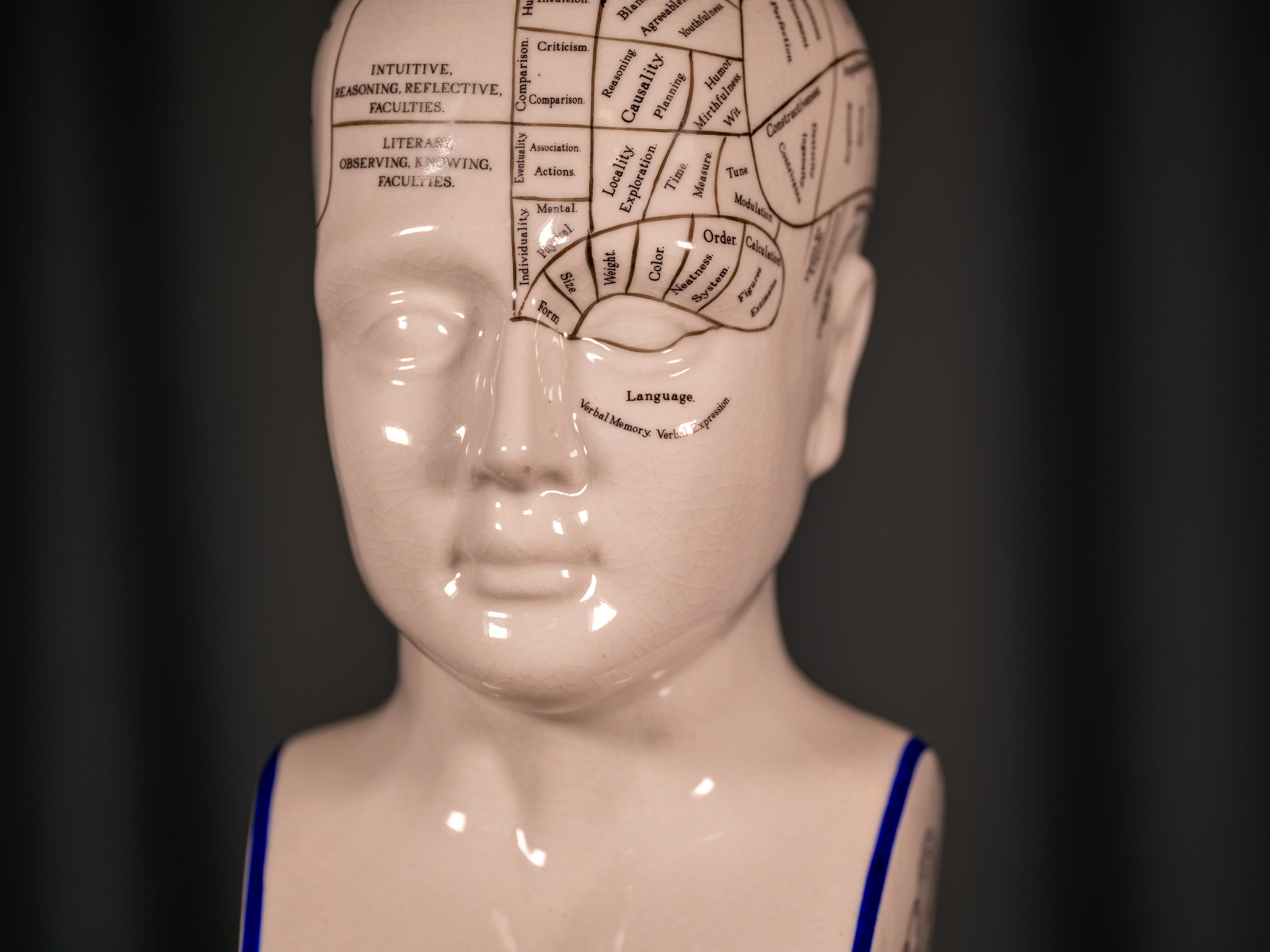
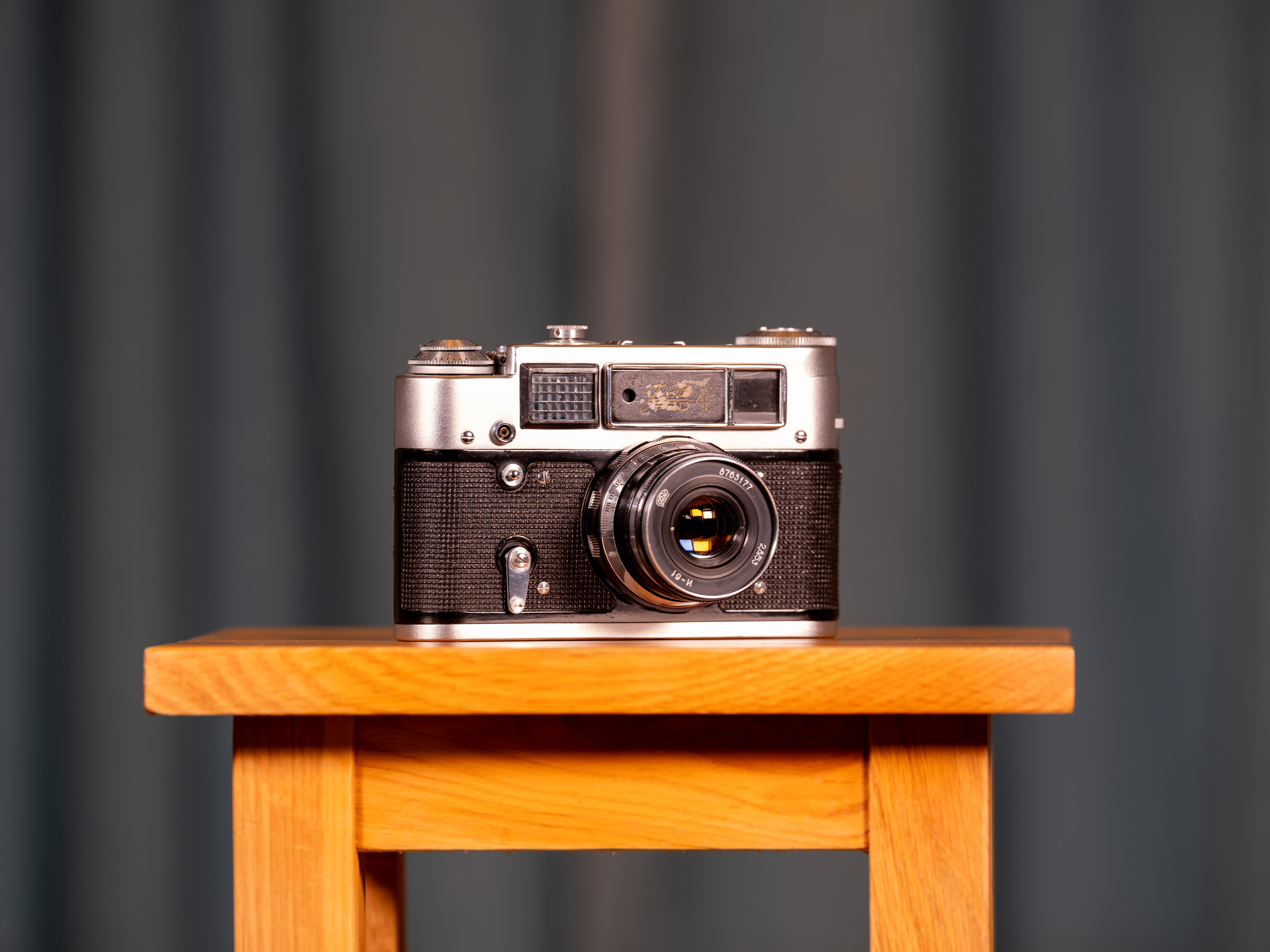
EXIF: Fujifilm GFX 100 II + Fujinon GF 250mm F4 R LM OIS WR, without teleconverter (1/20 sec, f/5.6, ISO 200)
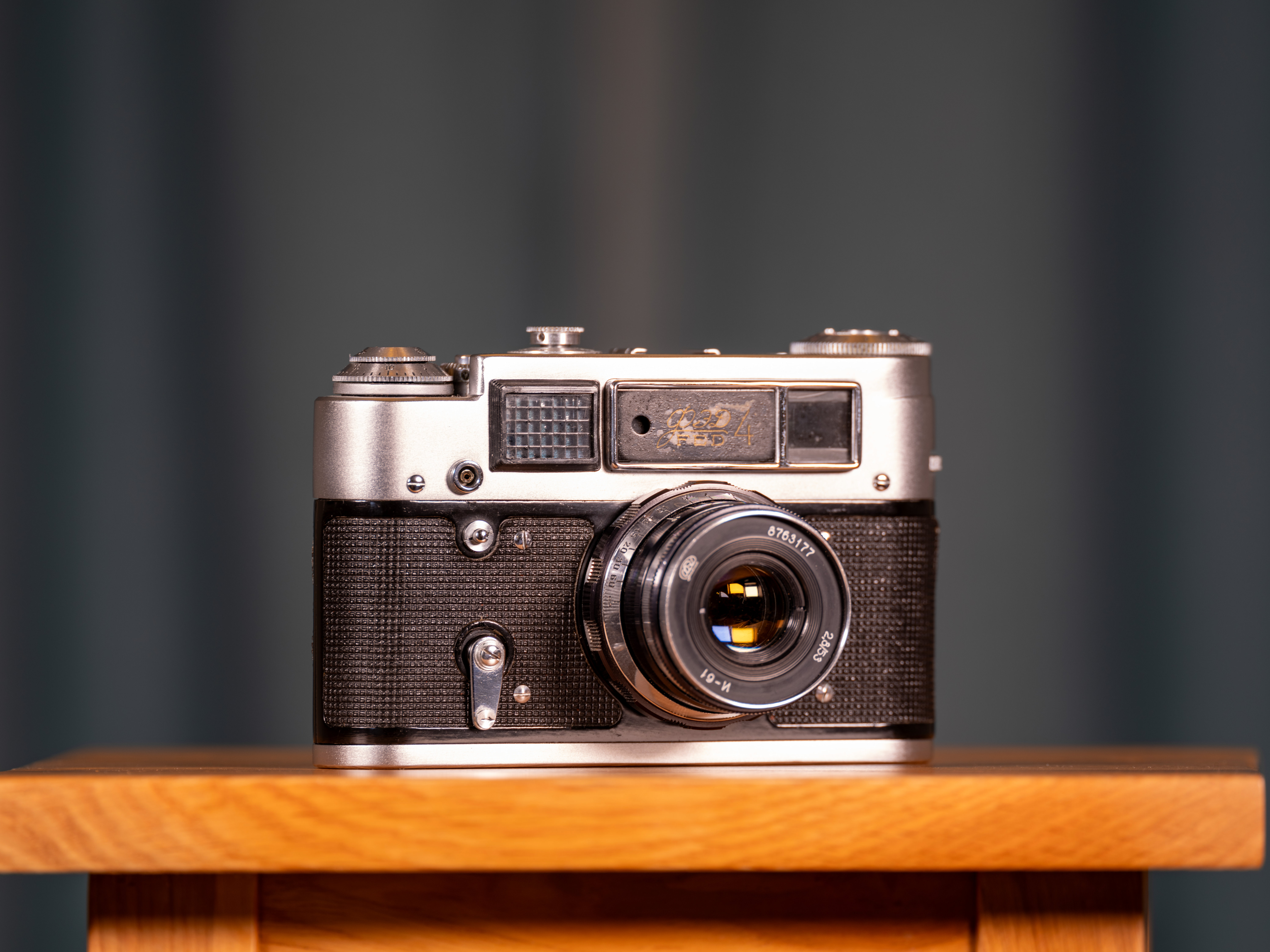
Fujinon GF 1.4X TC WR: Lab Results
We run a range of lab tests under controlled conditions, using the Imatest Master testing suite. Photos of test charts are taken across the range of apertures and zooms (where available), then analyzed for sharpness, distortion and chromatic aberrations.
We use Imatest SFR (spatial frequency response) charts and analysis software to plot lens resolution at the center of the image frame, corners and mid-point distances, across the range of aperture settings and, with zoom lenses, at four different focal lengths. The tests also measure distortion and color fringing (chromatic aberration).
Sharpness:
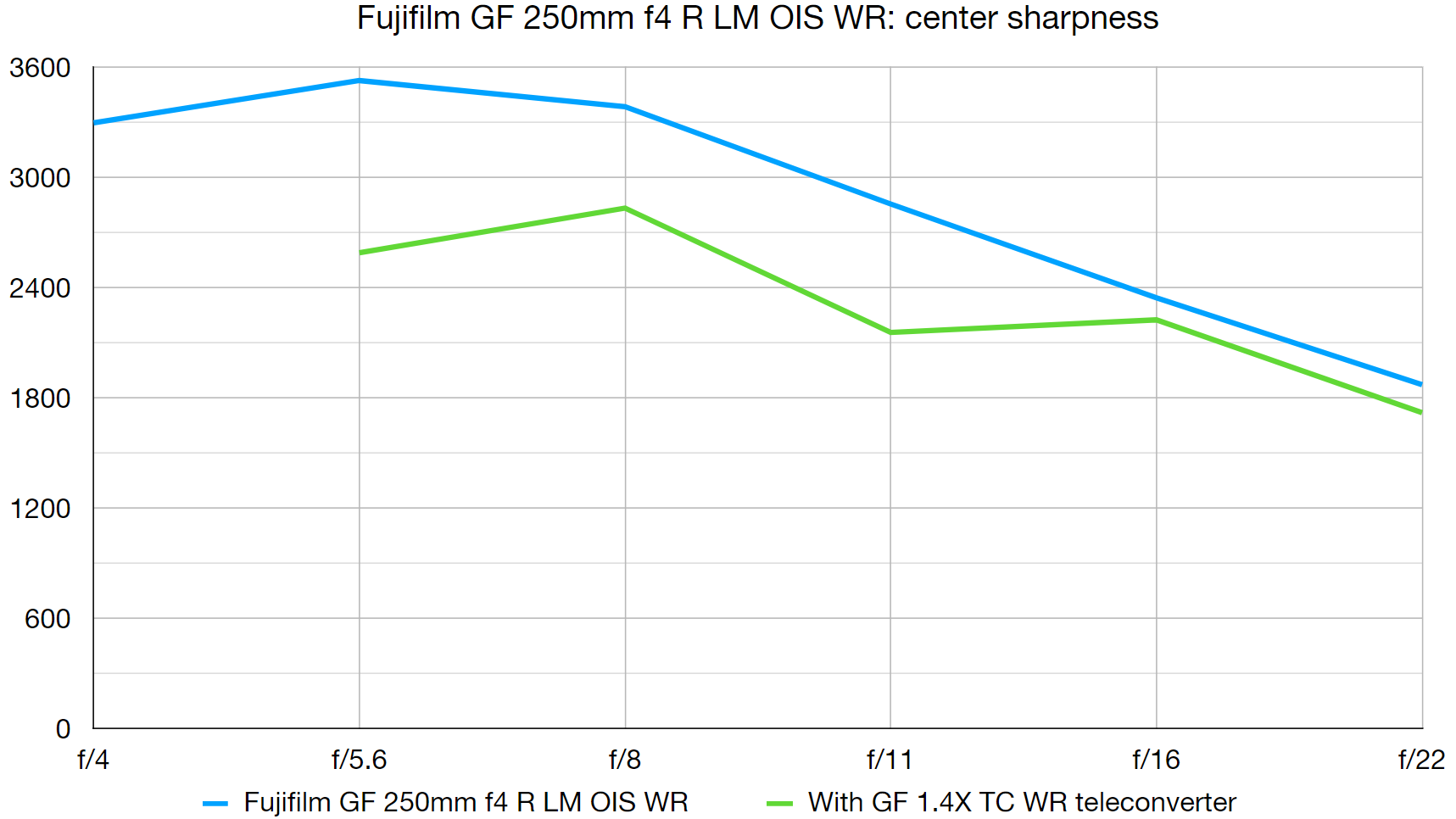
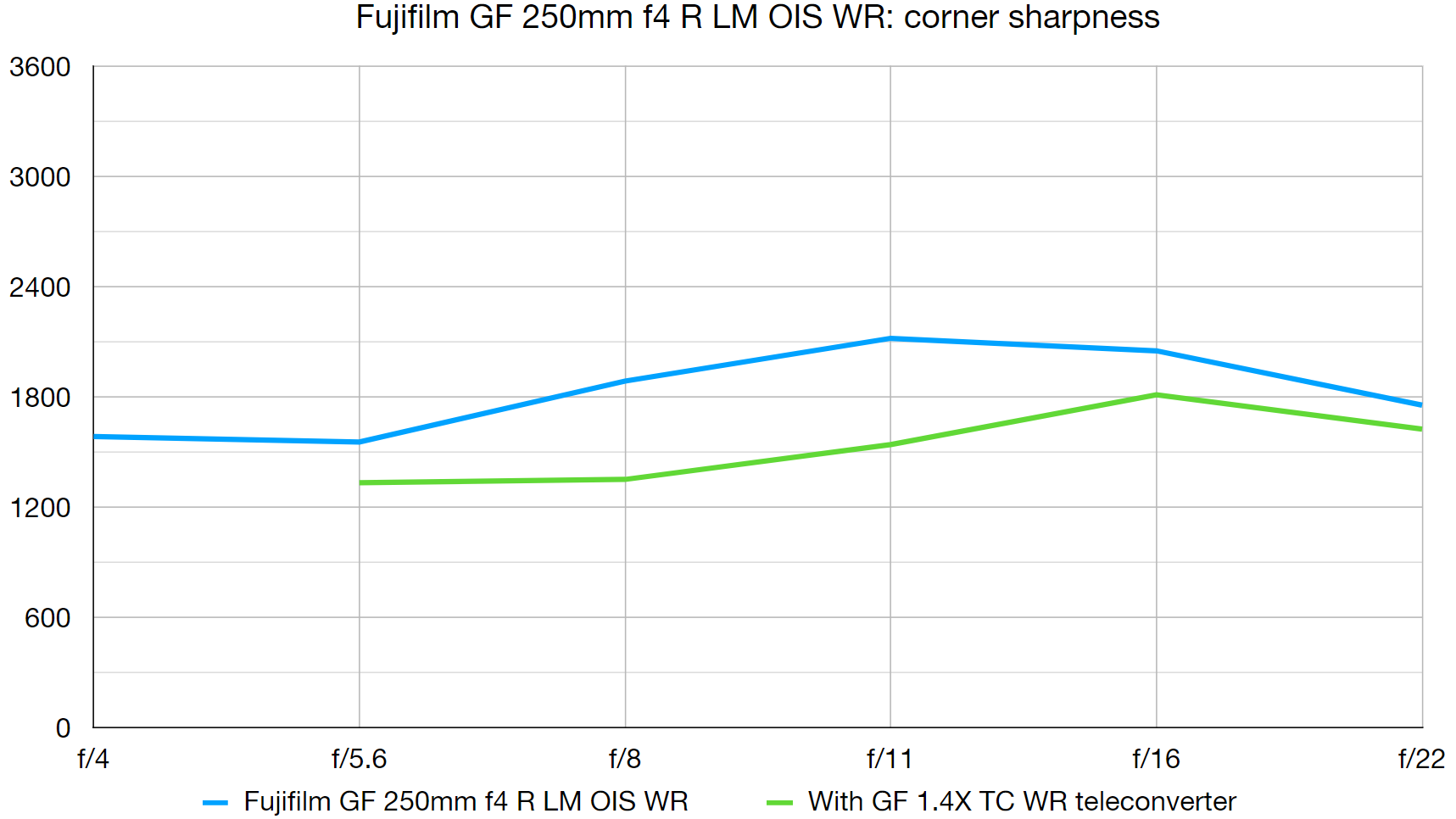
Many companies nowadays claim that their teleconverters have little or no impact on image quality. In this case, the impact is so slight that, from a visual perspective, you won’t see any drop in sharpness. Lab tests are a harsh judge but even these show minimal degradation in sharpness.
Fringing:
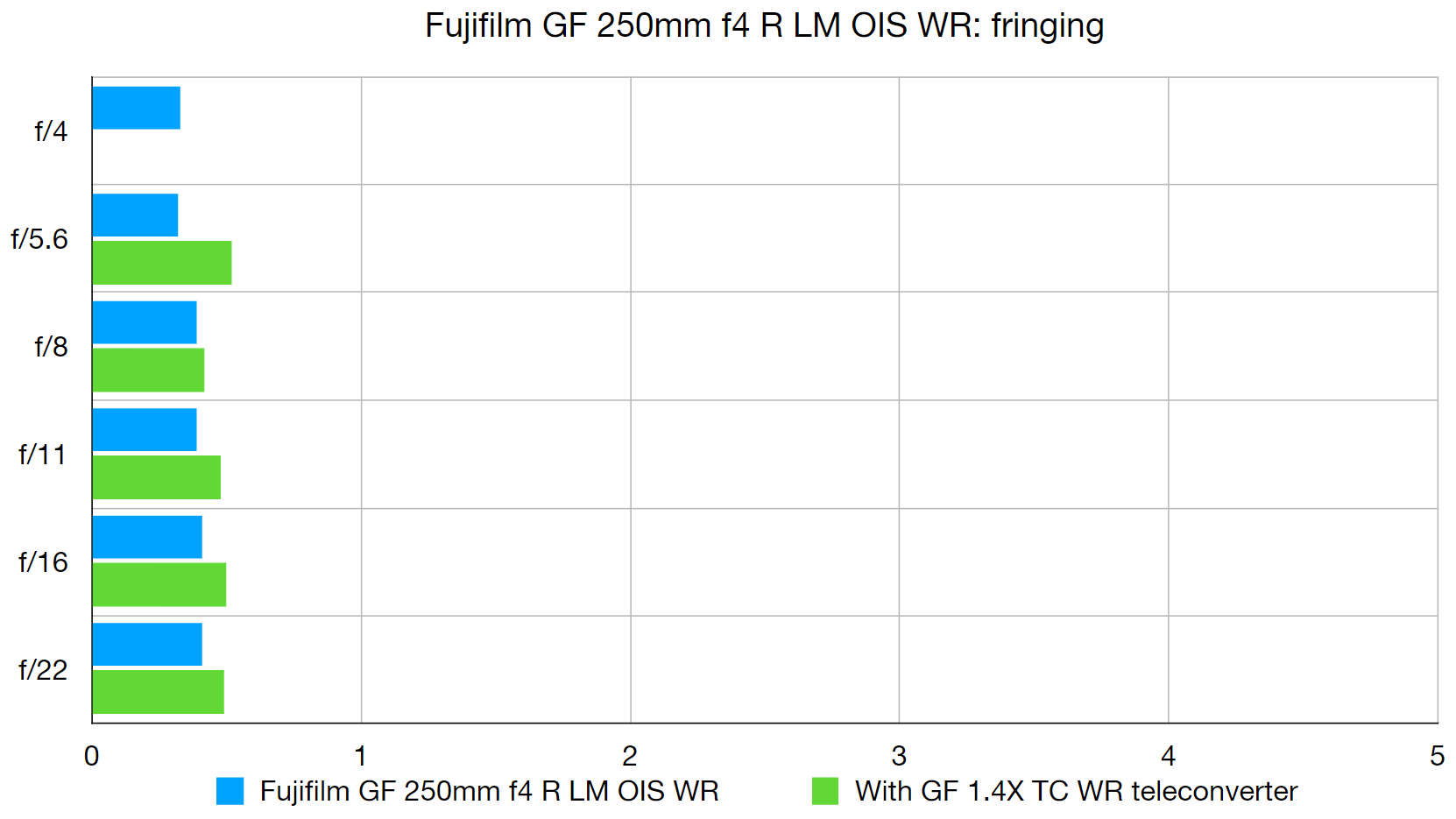
As with sharpness, there’s no discernible difference in color fringing when adding the teleconverter into the mix. Levels stay very low indeed, across the entire image frame.
Distortion: -0.24
The slight pincushion distortion of the main lens switches to an even slighter amount of barrel distortion when adding the teleconverter. It’s top marks all round.
Fujinon GF 1.4X TC WR: Verdict
Compared with 1.4x teleconverters for crop-sensor and even full-frame cameras, the Fujinon GF 1.4X TC WR is comparatively large, heavy and expensive to buy. I’d expect nothing less with a scaled-up medium format teleconverter that needs to deliver a larger image circle. The bottom line is that I love its performance and the extra telephoto reach that it gives to the Fujifilm GFX system, and the 1.4x boost in maximum magnification is an extra bonus. Typical of Fujinon GF lenses, it’s really well built and includes extensive weather-seals. All in all, it’s a gem of a teleconverter. I’m sold!
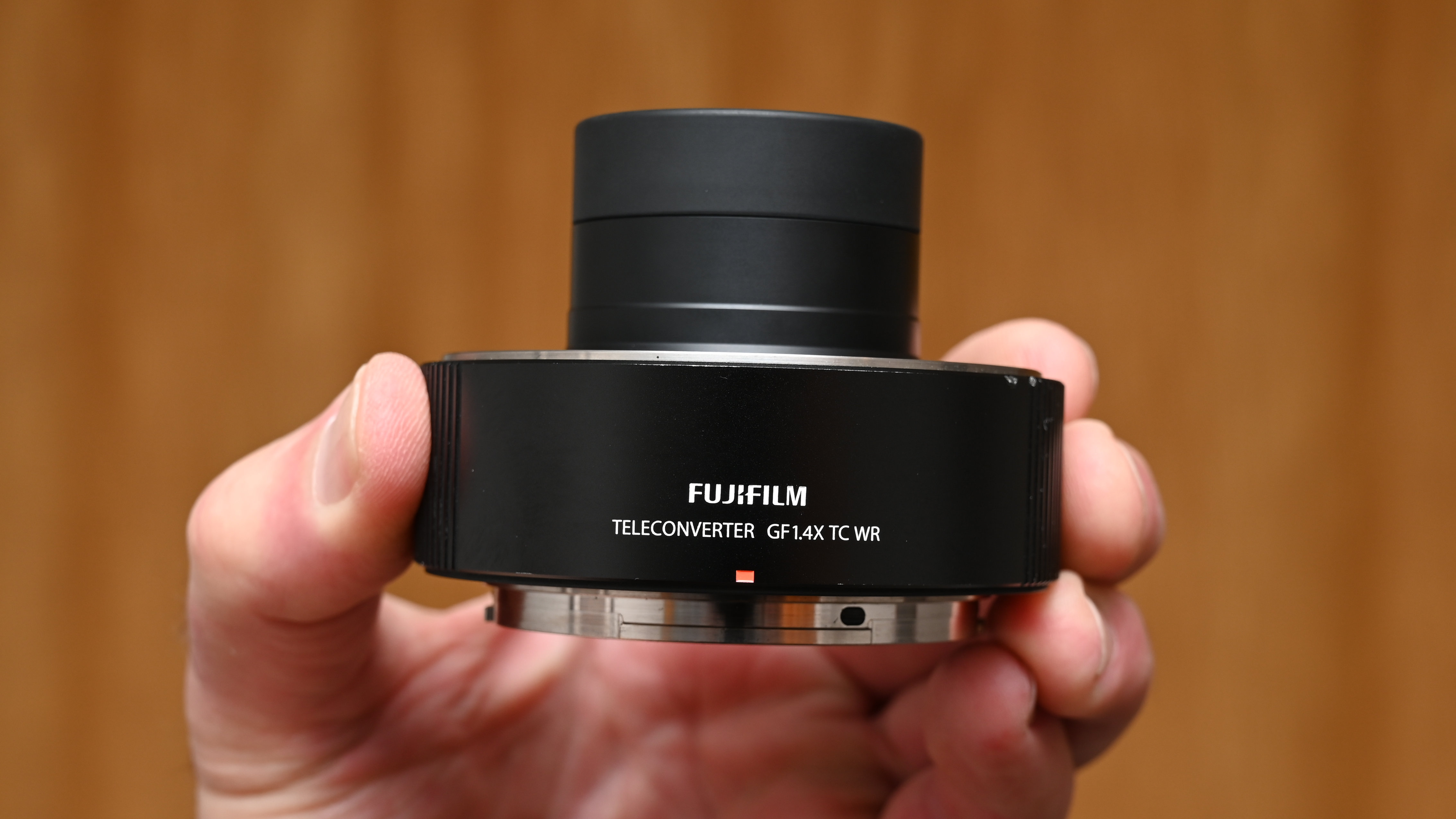
Should you buy the Fujinon GF 1.4X TC WR?
✅ Buy this...
- Adds telephoto reach
- Greater close-up magnification
- Weather-sealed build
🚫 Don't buy this...
- Relatively big and heavy for a 1.4x TC
- Expensive to buy
- Only currently compatible with 2 lenses
Matthew Richards is a photographer and journalist who has spent years using and reviewing all manner of photo gear. He is Digital Camera World's principal lens reviewer – and has tested more primes and zooms than most people have had hot dinners!
His expertise with equipment doesn’t end there, though. He is also an encyclopedia when it comes to all manner of cameras, camera holsters and bags, flashguns, tripods and heads, printers, papers and inks, and just about anything imaging-related.
In an earlier life he was a broadcast engineer at the BBC, as well as a former editor of PC Guide.

